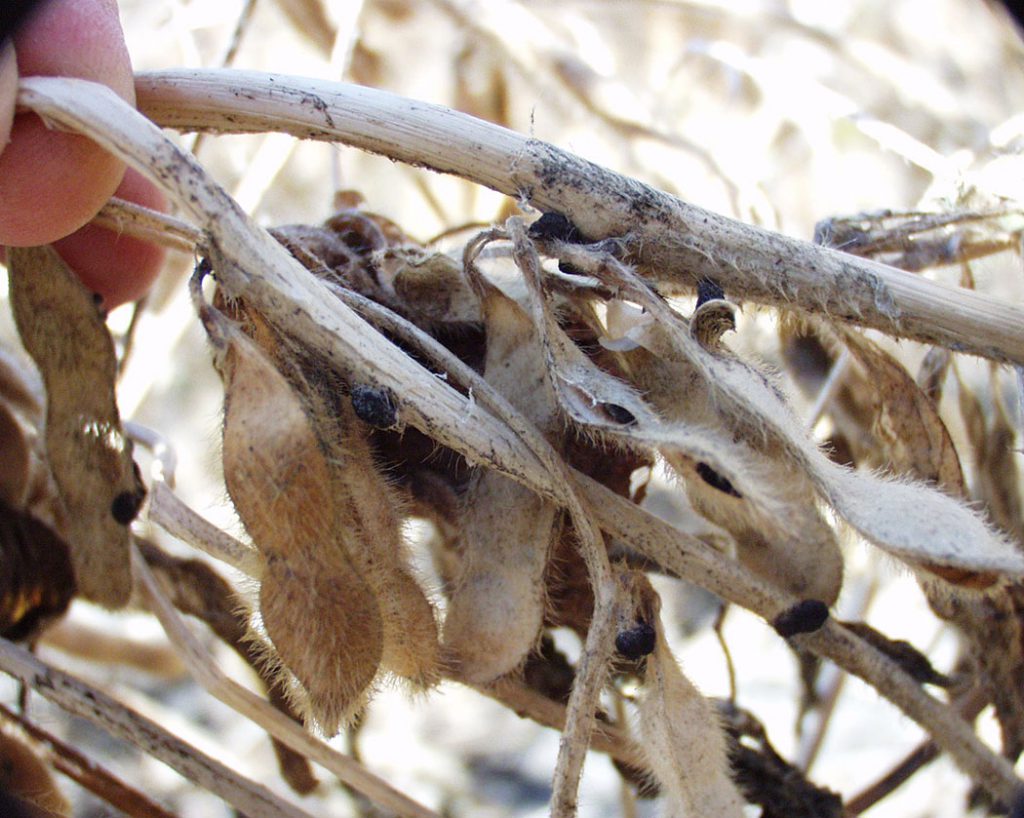White mould affecting Ontario soybeans

Cool, wet, summers like the one we have just had in Ontario can have a lasting effect on crop success—in the case of soybean crops, as long as ten years.
White mould is a disease that affects soybean plants. The disease is caused by a fungus that lives in the soil surface and forms mushroom-like structures called apothecia. As soybean seedlings break through the soil, the apotheciaejects spores that attach themselves to flower petals and emerging bean pods. As the plant flowers and the bean pods develop, they grow a fuzzy, white, stem rot and hard, black bits called sclerotia inside the stem and pods.
White mould affects hundreds of different plants, including soybeans, dry beans, snap beans, lima beans, sunflowers, canola, carrots, cabbage, and many more (fortunately for Ontario grain farmers, it does not affect corn or wheat plants).
Once a single plant is infected with white mould, it spreads the disease to its neighbours by contact. The sclerotia is also released into the field when affected plants go through a combine at harvest time—they end up in the soil surface where they can infect future crops. It can take up to ten years for sclerotia in the soil surface to completely disappear.
Farmers have come up with a few low-tech responses to the problem that can be very effective means of preventing the spread of the fungus that causes white mould in their fields. Crop rotation is the simplest and often the most effective solution—white mould does not affect corn or wheat, so farmers can grow those crops in affected fields without any issues. Because it takes up to ten years for the sclerotia to completely disappear, and at least five years before sclerotia levels in the soil surface is substantially reduced, farmers will often plant soybeans in affected fields anyways. Research shows that while all varieties of soybean plants are susceptible to white mould, different varieties are more or less resistant to it. Varieties of soybean plants that yield lower are typically less susceptible, as are varieties that can be planted early in the season. Finally, since the mould mainly spreads through plant-to-plant contact, there’s one other low-tech solution for soybean farmers battling white mould: planting in wider rows that make it harder for plants to touch each other.
White mould is not a new issue for Ontario soybean farmers, but wet summers like this past one tend to exacerbate the issue. Fortunately, a bit of common sense, as well as ongoing research supported by Grain Farmers of Ontario, goes a long way to protecting the soybean crop.
